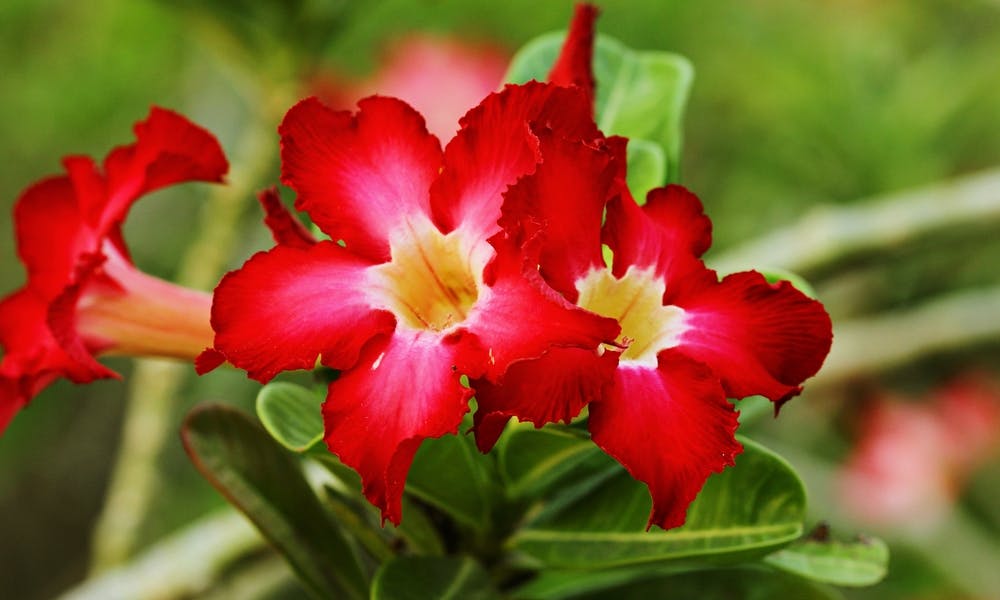Azalea, or azalia, is a small to medium leaved shrub and a member of the genus Rhododendron. It grows a large profusion of small to tall corymbs with small flowers in a variety of shapes. A distinction is made between the very hardy deciduous types and less hardy evergreen Japanese azaleas. Azalea is a plant that should not be too much exposed to the sun. Northwest facing azaleas do well with morning sun and shade in the afternoon.
Its relatively small, hairy, alternate, oval-shaped leaves are of a natural and slightly deep green color that changes in the fall. However, regardless of how evergreen or obsolete the leaves are, azaleas still offer bright and beautiful flowers to their holders. Azaleas are often offered as a gift from aunts or grandmothers.
Many botanical species of azaleas exist. For example, Rhododendron japonicum and Rhododendron tosaense. However, a large number of cultivars mainly represents azaleas.
In this article, we discuss several points such as:
* What Is the Origin of the Azalea or Azalia Plant?
* How to Plant an Azalea Plant?
* How to Maintain an Azalea Plant?
* Tips on Keeping Your Azalea Fresh.
What Is the Origin of the Azalea or Azalia Plant?
The name “azalea” comes from the Greek “azaleas,” which means dry, possibly referring to the plant’s woody stems. The ancient varieties of azalea have been around for about 70 million years. It is a native of China and Japanese lands and belongs to the Rhododendron plant family with over 150 different varieties. The colder the region, the smaller the flowers, but azalea is a hardy herb that can be seen blooming even in the mountains of the Himalayas.
This plant has numerous tiny but large flowers, giving whole fields a pinkish hue. Buddhist Monks initially grew this apartment plant in the west. The azalea first came to Europe in 1680, brought back by the ships of the Dutch East India Corporation (VOC), and many years later in America.
You can find a unique and graceful variation of azalea: it is the pure white version of the Japanese azalea, elegantly worn during special occasions.
How to Plant an Azalea Plant?
For planting your azaleas during the spring or fall, prepare a hole at a depth of 50cm, and a width slightly larger than the bough of your plant so it can take root well. The semi row cuttings should be made after flowering in August.
Azalea grows well in very acidic soils with high moisture levels. The deciduous or evergreen varieties are satisfied with medium-shade sun exposure. Before the winter comes, straw the base of your azaleas with pine tree bark or leaf soil to ensure good ground acidity and to provide protection from the cold. During the summer, do not over-water your plants.
Foliar spots, chlorosis, or powdery mildew; all of those can spoil the azalea if it has excess water. However, the biggest enemy of your plant is the red spiders, so watch carefully about it. Also, remember that both dry and hot indoor environments are harmful to azaleas.
How to Maintain an Azalea Plant?
Azalea flowers naturally bloom in April or May. Azalea may be a vulnerable plant that may require from you proper care if you want to grow it indoors.
Although indoor azaleas are much too sensitive to resist the cold weather outside, they also fear the overheating of indoor apartments. For durable flowering, a room temperature of around 10/15 degrees C is ideal, which means a room with little heat.
Also, remember to install the pot in bright light, close to a window, but be careful: no direct sunlight. Pay attention to irrigation: the soil must remain wet at all times. Locate the humidity at the bottom of the bark of the plant, which ideally should be darker in color as it is wet. Do not fall into the common habit of leaving water in the dish, which can suffocate and thus, rots the roots.
Tips on Keeping Your Azalea Fresh
The azalea or azalia is among the few flowering shrubs that bloom in the open air while winter is lurking outside, which is why this rare rhododendron plant is a sure-fire choice for indoors growing while awaiting spring.
A warm interior and regular “rain bathing” are the keys to healthy azaleas and to getting them to bloom again. After blooming, do not be afraid to prune off the shoots that prevent the bush from being compact. By trimming the stems above a bud, you encourage the healthy growth of your plant with granted freshness.
Only in May you can take the plant outdoors, in half-shade and protected from the strong wind. Apply fertilizer every two weeks, and take care to avoid drying out. Before winter frosts, put the plant in a fresh place (6 to 12°C) and give it a moderate amount of water until the buds appear, which is your reward! A fresh cycle begins.
The name “azalea” comes from the Greek “azaleas,” which means dry, possibly referring to the plant’s woody stems. In mainland China, the plant azalea is commonly known as “the bush that makes one feel at home”. The azalea is the national flower of Nepal, where you can find it mentioned in ancient medical texts. In Japan, giving an azalea is a wish for happiness.
The joyful and blazing flowers of azalea are a wonderful colorful cure for the dark winter days. Its flowers are abundant and plentiful, on bushy plants as much as on small plants. This plant has romantic flowers that come in white, pink, deep red or purple, as well as two-tone colors. The form of the blooms can also vary from small to big or from single to double. Its flowers can grow so large that you can barely see the leaves. Choose this plant for your home decoration and softly take care of it to make it last.

